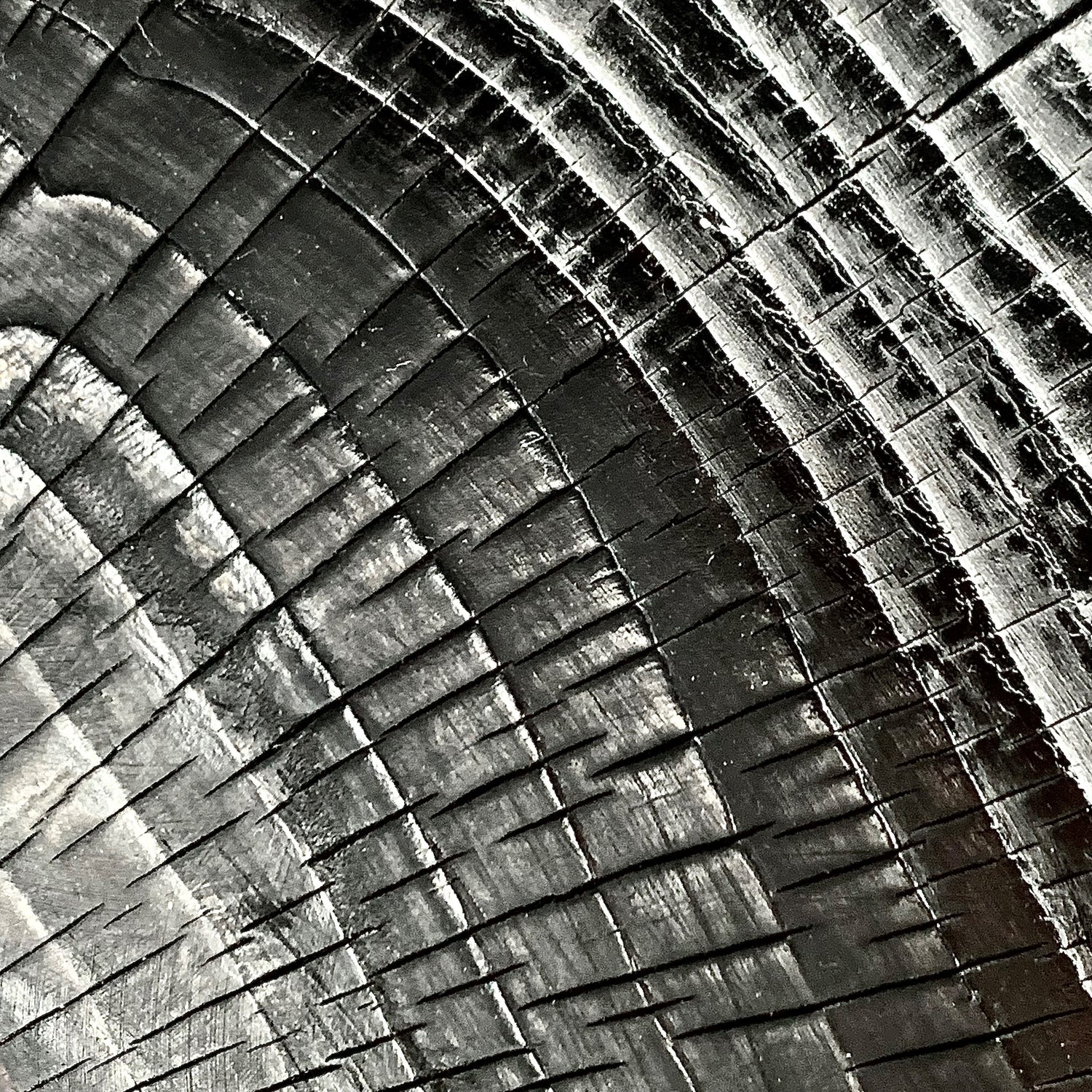Yakisugi and Aburi

Yakisugi
‘Yakisugi’, often incorrectly referred to outside of Japan as ‘Shou Sugi Ban’, is a traditional Japanese method of wood preservation using fire. The term literally means ‘burnt cedar’. In Japanese, ‘yaki’ means ‘to burn or char’ and ‘sugi’ is Japanese cedar.
Dating back to at least the 18th century, the technique originally developed in coastal regions of southern Japan, particularly on the island of Shikoku as a practical solution to protect wooden buildings from the elements. Yakisugi was most commonly used on timber siding on traditional Japanese houses, barns and even temples. Local builders discovered that charring the surface of the cedar boards made them more durable by preventing decay caused by insects, mould, rot and the elements. Ironically, it also helps with fire resistance!

Aburi
‘Aburi’ translates to ‘lightly charred’ and is a technique used to darken furniture and other wooden elements. Aburi is typically a lighter finish which highlights the grain.
Although similar in technique, yakisugi requires a deeper, more extensive char which gives the cedar its ‘alligator skin’ effect and makes the wood more durable, whereas aburi is more of a superficial effect for purely aesthetic purposes.
